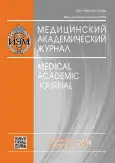The effect of orexin A application on the reaction of microglia cells body size stimulated by LPS injection
- Authors: Synchikova AP1,2, Horiuchi H1, Nabekura J1
-
Affiliations:
- National Institute for Physiological Sciences, Okazaki
- Institute of Experimental Medicine, Saint Petersburg
- Issue: Vol 19, No 1S (2019)
- Pages: 232-233
- Section: Articles
- Published: 15.12.2019
- URL: https://journals.eco-vector.com/MAJ/article/view/19414
- ID: 19414
Cite item
Abstract
The purpose of this study is to determine the effect of orexin A to LPS-activated microglia by investigating the morphological change. The effect of orexin on the level of LPS-activated microglia activation during the transition to the M1 phenotype was determined, which can be studied by measuring the cell area of the body.
Keywords
Full Text
About the authors
A P Synchikova
National Institute for Physiological Sciences, Okazaki; Institute of Experimental Medicine, Saint Petersburg
H Horiuchi
National Institute for Physiological Sciences, Okazaki
J Nabekura
National Institute for Physiological Sciences, Okazaki
References
- Hu X, Li P., Guo Y, et al. Microglia/macrophage polarization dynamics reveal novel mechanism of injury expansion after focal cerebral ischemia. Stroke. 2012;43(11):3063-70.
- Willie JT, Chemelli RM, Sinton CM, Yanagisawa M. To eat or to sleep? Orexin in the regulation on feeding and wakefulness. Annu Rev Neurosci. 2001;24:429-458.
- Xiong X, White RE, Xu L, et al. Mitigation of murine focal cerebral ischemia by the hypocretin/orexin system is associated with reduced inflammation. Stroke. 2013;44(3):764-70.
- Duffy CM, Yuan C, Wisdorf LE, et al. Role of orexin A signaling in dietary palmitic acid-activated microglial cells. Neurosci Lett. 2015;606:140-4.
- Shu Q, Hu Z-L, Huang C, et al. Orexin-A Promotes Cell Migration in Cultured Rat Astrocytes via Ca2+-Dependent PKCα and ERK1/2 Signals. PLoS One. 2014 Apr 18;9(4). https://doi.org/10.1371/journal.pone.0095259.
Supplementary files







